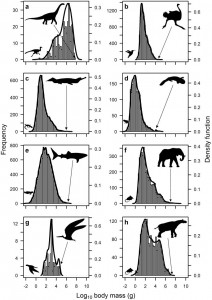In the modern global climate, higher levels of carbon dioxide (CO2) in the atmosphere are associated with rising ocean temperatures. But the seas were not always so sensitive to this CO2 “forcing,” according to a new report. Around 5 to 13 million years ago, oceans were warmer than they are today — even though atmospheric carbon dioxide concentrations were considerably lower.
The unusual mismatch between sea temperatures and CO2 levels during this time period hints that the relationship between climate and carbon dioxide hasn’t always been the same as it is today, said Petra Dekens, assistant professor of geosciences and a co-author of the new study published in the journal Nature.
“There was a transition, from the Earth’s climate system being not as sensitive to changes in atmospheric carbon dioxide to becoming more sensitive to these changes,” Dekens said. “What’s interesting is that we can see this transition happening within the last 13 million years.”
The connection between modern-day ocean warming and increased levels of atmospheric carbon dioxide produced by human activities has been confirmed in numerous studies, many of them collected in the most recent report of the Intergovernmental Panel on Climate Change.
Recent reconstructions of carbon dioxide levels for the late Miocene time period (roughly 5 to 13 million years ago) suggest that CO2 concentrations for the period were only 200-350 parts per million. Modern CO2 concentrations, by contrast, are around 390 parts per million.
The study’s lead author, Jonathan P. LaRiviere at the University of California, Santa Cruz, and colleagues including Dekens, sought information on late-Miocene ocean temperatures to analyze alongside the Miocene CO2 reconstructions.
They used an organic compound called unsaturated alkenone as their “fossil thermometers.” The compound is produced by tiny phytoplankton and preserved in cores of ocean sediment drawn from the mid-latitude Pacific Ocean basin. Ratios of the compound preserve a record of the water temperature in which the plankton lived.
These data provide the first evidence, Dekens said, that late Miocene sea surface temperatures were significantly warmer than today across a large swath of the North Pacific. The research team found that sea surface temperatures appeared to be highest in the early part of the late Miocene (around 12 to 13 million years ago), and gradually cooled throughout the late Miocene.
The researchers also looked at changes in the late Miocene thermocline, or the ocean layer where warmer, shallow waters meet colder, deeper waters. By comparing oxygen isotope data retrieved from a variety of fossil plankton species that thrive at different ocean depths, they found that the depth of the thermocline has been growing shallow over the past 13 million years.
It is possible, Dekens and colleagues suggest, that changes in the thermocline played some role in creating the warmer waters of the late Miocene — even as carbon dioxide concentrations stayed relatively low. The depth of the thermocline affects the mixing and circulation of colder and warmer ocean waters, which can in turn affect ocean temperature and atmospheric temperatures in a complex feedback cycle. “We would like to have more records from different regions,” Dekens said, “to see if this change in the depth of the thermocline was a global change.”
The thermocline might have grown shallow, the researchers say, as massive ocean waterways opened and closed with the shifting of tectonic plates. These changes would have remodeled ocean basins and the major patterns of ocean circulation.
One major waterway that began to close during the period was the Central American Seaway, an ancient body of water separating North and South America. The seaway was later closed by the volcanic creation of the Panama isthmus.
The study published in the June 7 issue of Nature. LaRiviere and Dekens’ co-authors include A. Christina Ravelo and Heather L. Ford of the University of California, Santa Cruz; Allison Crimmons of the U.S. Environmental Protection Agency; Mitch Lyle of Texas A&M University; and Michael W. Wara of Stanford Law School.













 January 7th, 2013
January 7th, 2013  Riffin
Riffin 








